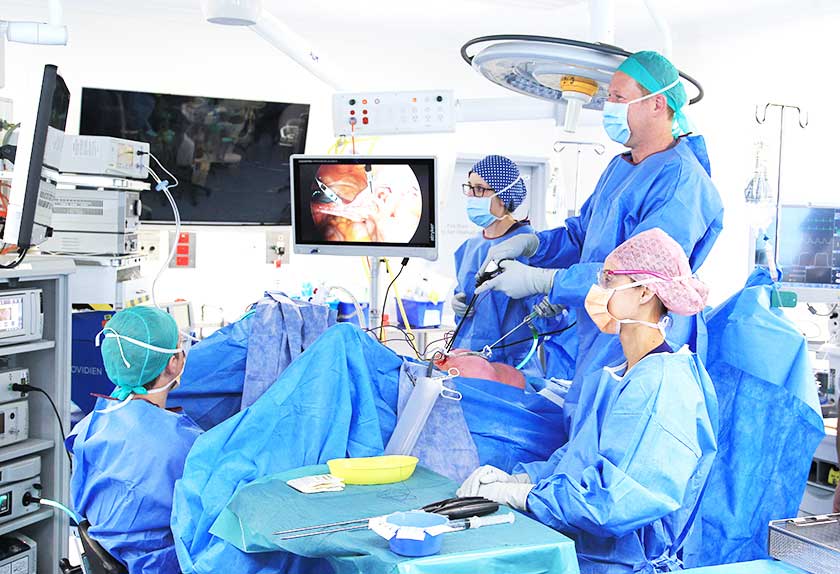Indocyanine green for sentinel lymph node mapping
19 Dec 2017

Deputy Head of Department of Gynaecology Dr Stuart Salfinger is the first gynaecologic oncologist in the state to use sentinel lymph node mapping, which can identify the first lymph node (sentinel node) that drains from the area and could spread the cancer around the body.
The sentinel node is identified using a fluorescent dye known as Indocyanine Green (ICG) and a near-infrared camera.
“Cancers in their early stage can have about a five per cent chance of being present in the lymph nodes (or glands) in the pelvis, which can spread the cancer,” Dr Salfinger said.
“However, lymph nodes are only removed routinely during surgery in patients who have a high-risk disease or an unusual CT scan, as about 20 per cent are of patients at risk of lymphedema or leg swelling.
“This means that a number of patients will have cancer in the lymph nodes that is not detected with standard surgery, which may increase the risk of the cancer returning.
“Studies have shown that by identifying and removing the sentinel node, we have the best chance of identifying any early spread of the cancer and undertaking appropriate treatment.
“The removal of only the initial draining lymph nodes does not carry the same high risk of lymphedema or leg swelling.”
The sentinel node is identified during laparoscopic hysterectomy (key hole surgery) to remove the uterus and treat the cancer.
The dye is inserted during the procedure and an infra-red camera is used to identify the sentinel mode, which is then removed laparoscopically.
As it is minimally invasive surgery, most patients are usually home within one to two days.
Dr Salfinger said ICG has been used safely for many years for studies of blood vessels in eyes, heart function and liver blood flow.
Similar technology is used to identify the sentinel node to stop the spread of breast cancer.
You may be interested in

